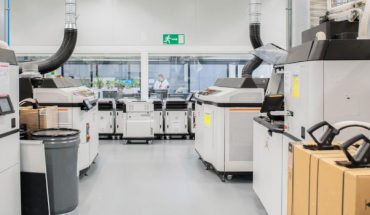In my recent interview with Mary Ann Yule, President, HP Canada, Ms. Yule spoke about the three disruptive technologies that will satisfy Canadian consumers who seek highly personalized customer interaction.
Q: How would you characterize this era of the customer?
A: We’re in the midst of what some industry observers have called the “Age of the Customer.” The explosion of social, mobile and cloud technologies in the last few years have given Canadians more options than ever before to consume content. This is a double edge sword for marketers, advertisers, and generally any business trying to reach today’s connected customers.
To win in this climate, brands must be entirely obsessed with delivering customized and targeted customer experiences and find innovative ways to gain an edge on the competition.
Q: How are businesses delivering valuable, personalized experiences for their customers?
A: We’re noticing that three disruptive technologies have pulled ahead of the competition in this age of hyper-personalized product marketing: 3D printing, augmented and virtual reality and large format printing.
3D printing machines have made great strides with newer systems capable of producing high quality items up to 10 times faster for half the cost than before. That’s opened a world of possibility for product marketers across many industries.
In retail, for example, Nike, Adidas, New Balance have drawn attention for 3D printing a variety of custom shoes. In the future, marketers could build on these efforts by offering customers the ability to step up to in-store kiosks, custom-design their ideal shoes and print them out right there on-the-spot in a matter of minutes.
AR has been all the rage recently because of Pokemon Go, and VR is showing up in other high-end devices, such as premium gaming PCs. But AR should be stoking marketer interest because it offers the opportunity to change how consumers view or experience brands.
Recent advances in large format printers has enabled more customization, faster and more efficient printing and cost savings. Today’s business owners want to be able to customize displays for specific geographic locations or stores since a shop in Ottawa might not have the same sales or promotions as an outlet in Vancouver. Recent innovation in large format printing makes this possible, which is one reason these machines are continuing to gain traction.
 Q: Do you think that these technologies apply to all Canadians, or are some segments of our society more likely to want and expect such dynamic and personalized approaches in winning them as customers?
Q: Do you think that these technologies apply to all Canadians, or are some segments of our society more likely to want and expect such dynamic and personalized approaches in winning them as customers?
A: The mass customization movement in manufacturing will have an impact on many industries, but marketers will be well poised to tap into the embedded information built into 3D printed parts. And they better start thinking about it soon as global organizations such as BMW and Johnson & Johnson have already made plans to use industrial 3D printers in production.
Spending on AR and VR in Canada is expected to hit US$500 million next year, according to IDC. The possibilities are endless, and marketers have a massive opportunity to use this technology to greatly enhance customer experience with more personalized content.
Lastly, Augmented Reality AR and VR share one commonality: the ability to help people envision possibilities suited to their own desires.
No matter which technology Canadian marketers embrace, it will be imperative to do it for the right reasons – customization, personalization and overall customer experience.
Related Links
3D Printing for the Masses: Advanced Technology Meets Consumer Electronics




